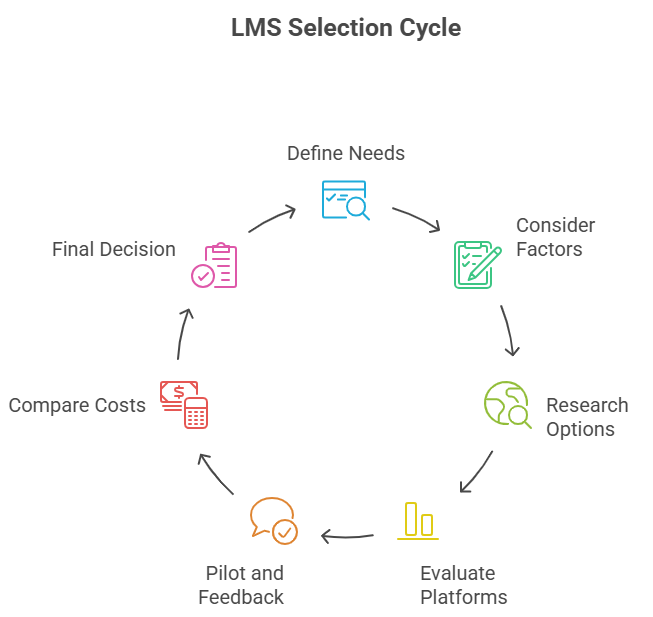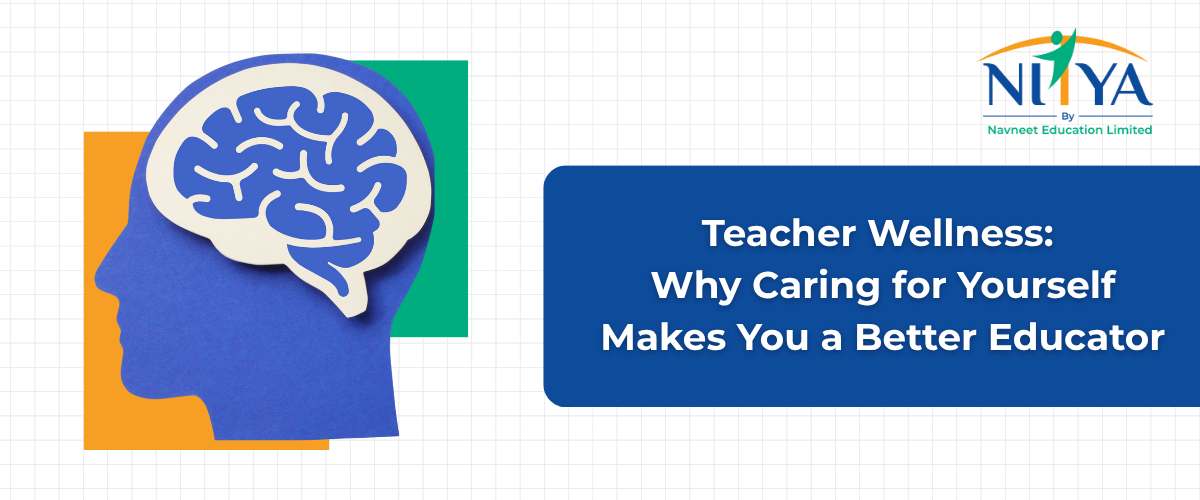As the Indian education ecosystem evolves, choosing the best LMS for schools is becoming a strategic imperative. An LMS can directly impact academic delivery and student outcomes, from supporting blended learning to easing administrative load.
But with the growing number of platforms claiming to be the best LMS platforms for schools, how can you make the right decision for your institution?
This guide breaks down the process into clear, actionable steps, helping school leaders and administrators identify needs, evaluate options, and implement the right learning management system software in India.

- Define Your School’s Needs and Objectives
The selection process must begin with a simple but essential question: What exactly does your school need from an LMS?
Your LMS is a tool; it should match the job you’re trying to get done. LMS for CBSE schools may mean aligning digital content with the curriculum, or simplifying communication between teachers and parents, while others may be looking to digitise attendance or daily instructions or integrate live classes.
Start by identifying your institution’s short-term and long-term goals. Every school has its own identity, and your choice of LMS should reflect it. Before getting lost in features and pricing, step back and ask: What role will digital tools play in your institution’s future?
This clarity ensures you don’t just chase features, but choose an LMS that meets your functional and pedagogical goals.
- Key Factors to Consider When Choosing an LMS
Once objectives are defined, the next step is to outline the criteria against which LMS platforms will be evaluated. Not every system is built for the Indian context, so here’s what truly matters when reviewing learning management system software in India:
- User Experience (UX): Teachers and students must be able to navigate the platform with minimal friction. A complicated UI will only increase resistance and reduce usage, and thus, the interface should be intuitive for teachers, students, and administrators.
- Mobile Accessibility: In a mobile-first country like India, the LMS must work smoothly across smartphones and tablets. A large percentage of students rely on mobile devices, especially in Tier II and Tier III cities; thus, mobile compatibility is non-negotiable.
- Content Delivery Tools: Look for flexibility in sharing lesson plans, multimedia content, assignments, and assessments. In CBSE schools, integration with lesson plans and term structures is vital.
- Data Security & Compliance: Student data should be encrypted, and the platform should comply with national data regulations.
- Integration Capabilities: Smooth compatibility with existing tools such as school ERP systems, Zoom, or Google Workspace enhances daily workflows.
- Language and Accessibility Support: In diverse classroom environments, language options and inclusive design go a long way in driving adoption.
These factors help schools evaluate whether the LMS will support not just current needs, but future academic and operational scalability.
- Research and Shortlist LMS Options
With a checklist of priorities and features in hand, start exploring platforms that fit. While many vendors may appear promising on their websites, it’s important to dig deeper.
Look for:
- Case studies from schools similar to yours
- Testimonials from Indian educators or reputed institutions
- Transparent pricing models and post-sale support
Also, explore reliable information sources such as education forums, conferences, and EdTech directories.
If your school is part of the CBSE ecosystem, ensure your shortlisted platforms are purpose-built or adaptable to CBSE’s academic structure. For a broader understanding of how schools across India are approaching digital transformation, this article on how EdTech is transforming Indian schools offers valuable insights into emerging tools and trends.
- Evaluate and Compare LMS Platforms
With a few promising options shortlisted, conduct a side-by-side evaluation. This isn’t just about ticking off features, but understanding how well each platform aligns with your school’s practical needs.
Create an evaluation matrix that includes:
- Alignment with your curriculum
- Technical onboarding and training support
- Customisation and scalability capabilities
- Administrative tools like attendance, grading, and reporting
- Parent-facing modules for better engagement
When evaluating learning management system software India-wide, assess vendor responsiveness and flexibility, especially during onboarding.
- Pilot and Gather Feedback
Even the most impressive demos cannot replace real-world classroom testing. The real test of an LMS lies in the lived experience of teachers and students using it in their daily workflow. That’s why running a pilot is essential before full-scale implementation. Before fully committing, conduct a pilot with a small set of teachers and students. The goal is to test real-time usability and gather actionable feedback.
Begin with a focused trial, a single grade level, a specific subject department, or a group of early-adopter teachers. Over 2-4 weeks, observe how the LMS performs under real classroom conditions.
During the pilot:
- Monitor teacher and student engagement
- Track assignment submissions and content completion
- Is the login process intuitive across devices?
Qualitative feedback, gathered through informal meetings or structured surveys, is as valuable as platform metrics. It helps uncover hidden usability challenges, shapes training needs, and helps your team make a data-informed final choice.
- Compare Pricing and Total Cost of Ownership
When evaluating the best LMS for schools, cost is inevitably part of the equation. But a common mistake schools make is focusing solely on the subscription fee.
A more informed approach is to assess the Total Cost of Ownership (TCO), the cumulative investment you’ll make over time. This includes:
- Setup charges
- Training and onboarding support
- Custom feature integrations
- Data migration
- Renewal terms and hidden costs
What may seem like a low-cost solution could prove expensive later if support is limited or platform flexibility is poor. Conversely, a high investment in a well-designed LMS can provide better ROI by reducing teacher workload and improving academic efficiency.
- Make the Final Decision and Plan Implementation
Once a platform is selected, a well-structured implementation plan will ensure success. Done well, it sets the stage for long-term adoption and results.
Your implementation roadmap should include:
- Defining timelines for staged rollout across classes
- Assigning internal POCs for technical support and academic coordination
- Structure training sessions tailored to each group- admins, teachers, and students
- Establishing regular checkpoints, 30, 60, and 90 days, for user experience and troubleshooting issues
For schools adopting an LMS for CBSE schools, ensure academic coordinators work closely with the vendor to configure academic calendars, subjects, and assessments during onboarding.
Why NAVNEET TOPTECH Is Trusted by Schools Across India
In a crowded landscape of digital platforms, TopSchool by NAVNEET TOPTECH stands apart for one simple reason: it’s built for Indian schools.
While many platforms offer generic features, TopSchool is purpose-designed to address the real challenges faced by educators, students, and administrators in India’s school systems. Whether you’re affiliated with CBSE or managing a multi-campus group, it adapts to your structure without complexity.
With features like CBSE curriculum integration, adaptive content delivery ecosystem, dedicated interface and dashboards for all user types, and real-time parent engagement tools, it aligns with your educational vision, teaching culture, and community’s expectations.
NAVNEET TOPTECH brings together decades of educational insight with the functionality today’s schools need, offering adaptability and long-term value rooted in the realities of the Indian education system.
The best LMS platforms for schools don’t just streamline academic tasks. They create space for educators to focus on what matters most, teaching. Thus, investing in a platform that understands your context, your curriculum, and your constraints is the real game-changer.




